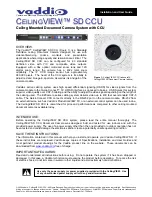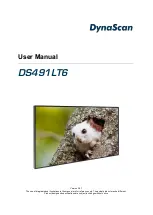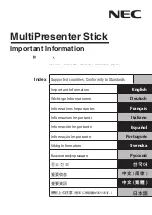
74
ProEM System Manual
Issue 3
5.3.8
Saturation
ProEM uses a special EMCCD to amplify input signal (electrons) to achieve low read
noise. Though, unlike intensified CCD cameras, EMCCDs can withstand bright light
sources, care must be taken not to (1) overexpose, and (2) use excessive EM gain. If the
camera is used in high light conditions and with excessive EM gain, the EM gain rapidly
degrades over time.
When signal levels in some part of the image are very high, charge generated in one
pixel may exceed the well capacity of the pixel, spilling over into adjacent pixels in a
process called blooming. In this case a shorter exposure is advisable, with signal
averaging to enhance S/N (Signal-to-Noise ratio) accomplished through the software.
For signal levels low enough to be readout-noise limited, longer exposure times, and
therefore longer signal accumulation in the CCD, will improve the S/N ratio
approximately linearly with the length of exposure time. There is, however, a maximum
time limit for on-chip accumulation, determined by either the saturation of the CCD by
the signal or the loss of dynamic range due to the buildup of dark charge in the pixels.
CAUTION!
!
If you observe a sudden change in the baseline signal, there
may be excessive humidity in the camera vacuum enclosure.
Turn off the camera and contact Teledyne Princeton
Instruments Customer Support. Refer to
on page 160 for complete information.
NOTE:
Do not be concerned about the DC level of this background.
What you see is not noise. It is a fully subtractable bias
pattern. Simply acquire and save a dark charge background
image under conditions identical to those used to acquire
the actual image. Subtracting the background image from
the actual image will significantly reduce dark-charge
effects.
Summary of Contents for ProEM Series
Page 1: ...www princetoninstruments com ProEM System Manual 4411 0126 Issue 3 September 26 2019 ...
Page 10: ...10 ProEM System Manual Issue 3 This page is intentionally blank ...
Page 16: ...16 ProEM System Manual Issue 3 This page is intentionally blank ...
Page 30: ...30 ProEM System Manual Issue 3 This page is intentionally blank ...
Page 50: ...50 ProEM System Manual Issue 3 This page is intentionally blank ...
Page 88: ...88 ProEM System Manual Issue 3 This page is intentionally blank ...
Page 114: ...114 ProEM System Manual Issue 3 This page is intentionally blank ...
Page 122: ...122 ProEM System Manual Issue 3 Figure 7 8 LightField Settings 4411 0126_0078 ...
Page 136: ...136 ProEM System Manual Issue 3 This page is intentionally blank ...
Page 146: ...146 ProEM System Manual Issue 3 This page is intentionally blank ...
Page 152: ...152 ProEM System Manual Issue 3 This page is intentionally blank ...
Page 161: ...This page is intentionally blank ...
















































